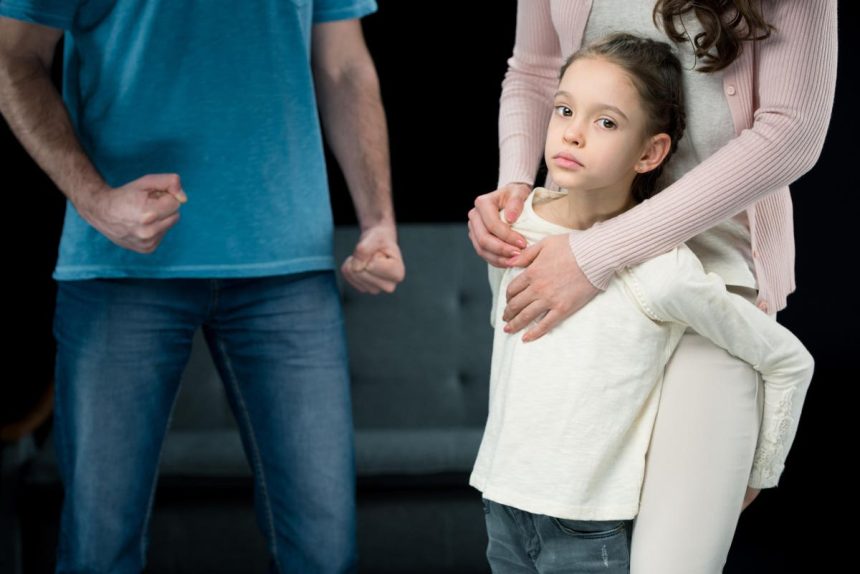State law and the impact of domestic violence in a custody determination
“Approximately half of all state laws make a presumption that it is harmful to the child and not in the best interest of the child to be placed in sole custody or joint legal custody with the perpetrator of domestic violence. In the remaining states, domestic violence is merely one factor in a list of factors that must be considered in custody and visitation decisions.” Daniel G. Saunders Karen Oehme, Child Custody and Visitation Decisions in Domestic Violence Cases: Legal Trends, Risk Factors, and Safety Concerns (Revised 2007).
Model Code
The Model Code of Domestic and Family Violence developed by the National Council of Juvenile and Family Court Judges developed the wording, that there is a “rebuttable presumption that it is detrimental to the child and not in the best interest of the child to be placed in sole custody, joint legal custody or joint physical custody with the perpetrator of family violence.”
Effect on Children
Emotional abuse of children by men who batter is even more likely than physical abuse because nearly all of these men’s children are exposed to domestic violence. This exposure to domestic abuse by their fathers often constitutes a severe form of child abuse.
Notwithstanding this body of information about domestic violence and its impact on children, courts have consistently awarded custody to the abuser and failed to heed the warnings of the abused parent, usually the mother. In part this is due to the effective use of an alienation defense by the abuser. In Long Island, New York, the Valva case is indicative of a mother who lost custody of her three children notwithstanding her warnings to the court. 8 year old Thomas was killed after being locked in a cold garage overnight. He died of hypothermia.
United States Department of Justice: Guiding Principles
The Office of Violence against Women (OVW) launched a Family Court Enhancement Project to assist courts and the communities to make sound decisions regarding custody and domestic violence. Court systems in Cook County, Illinois, all three counties in Delaware, Hennepin County, Minnesota, and Multnomah County, Oregon, participated. The sites identified procedures, practices and structures related to custody and parenting time (visitation) to assist in creating techniques and activities to enhance the resilience and well-being of children.
The 16 principles address such issues as the timeliness of getting before the court, issuing temporary orders, prioritizing these cases, making sure courts have the domestic violence history, providing legal representation to victims, making services for victims accessible, making access to information available, providing safe disclosure of domestic violence and parenting time matters, and ensuring that court procedures should be based on evidence-based practices.
Are the 16 Guiding Principles Working in Practice to Protect Children and Women?
There are several problems inherent in the 16 guiding principles. In part the list relies on a prior history of abuse and in many families, there is no history because the abuse has been kept secret. Secondly, the list suggests participation in child custody and parenting time processes which are often using coparenting classes to further abuse the victim and the children. “Unfortunately, family court and basic custody agreements are ignoring this advice and forcing victims and abusers to “work together” to raise their children and essentially stay together as a “family” despite criminal abuse, all in an effort to be good to kids. This practice is throwing victims back into the world where their abusers are no longer held accountable and their healing comes to a screeching halt.”
The 16 guiding principles do not focus on credibility findings of the complaining witness, usually the mother, nor do they address trauma and its potential impact on the complaining witness. The focus is weighted towards the process of disseminating (#8) or providing information and educating.
Are there actually evidence-based best practices evaluations (#15)? Does any family court do a look back at its own child custody/domestic violence cases to see how the children and the victim faired years later following its child custody determination? Are there family court case longitudinal studies of custody determinations whereby a county looks at its own custody determinations?
Professor Joan Meier, PhD, George Washington University Law School, wrote in her 2021, Denial of Family Violence in Court: An Empirical Analysis and Path Forward for Family Law, “First, the law must outlaw the use of alienation theory (or its synonyms) as a reason to discount abuse allegations. Second, state law should explicitly recognize that there will always be indeterminate cases and offer a path forward which does not ignore risk to children. “. Professor Meier previously tracked and reported on Family Court decisions involving claims of alienation and abuse and the results for women.
Nothing has changed
In 1996, the New York state legislature, the last state to adopt such a measure to amend its domestic relation laws to consider domestic violence as a factor in child custody best interest determinations, was concerned that general, non-particularized claims of violence could be raised in order to gain an unfair advantage in a custody/visitation dispute. Hon. Judith J. Gische, Domestic Violence As A Factor In Custody Determinations In New York State, 27 Fordham Urb. L.J. 937 (2000). Justice Gische wrote, “Although the statute mandates courts to consider domestic violence, it is clear that the presence alone will not be outcome determinative.”
The New York statute has not been amended and remains the law in the state of New York. The existence of domestic violence in New York is not outcome determinative of a custody determination.
Change must come
The problems with women being believed in court must be addressed head on. State statutes must be amended and rules and or laws enacted to make allegations of abuse and their presentation to a court understood and believed. The notion or belief that women are using allegations of abuse for a custodial advantage must be abolished as the misogynist dog whistle it is. Alienation claims and their progeny as defenses to domestic violence should be discouraged. Family court must find a method of scholarship to study the outcomes of its cases and the impact on children each year after its initial determination especially those involving allegations of domestic violence. Learning about the death of a child on television news should not be the only way to learn of the result of a custody determination.
Reliance on psychological evaluations to change custody must end. Women should not need to commit suicide to end this practice.
Finally, Justice Gische suggested in 2000 that domestic violence must be defined by the legislature so that courts can make appropriate determinations as to custody and visitation (parenting time). States are still considering coercion and control statutes although it has been recognized as domestic violence since 2006 by Dr. Evan Stark, PhD.
Read the full article here









